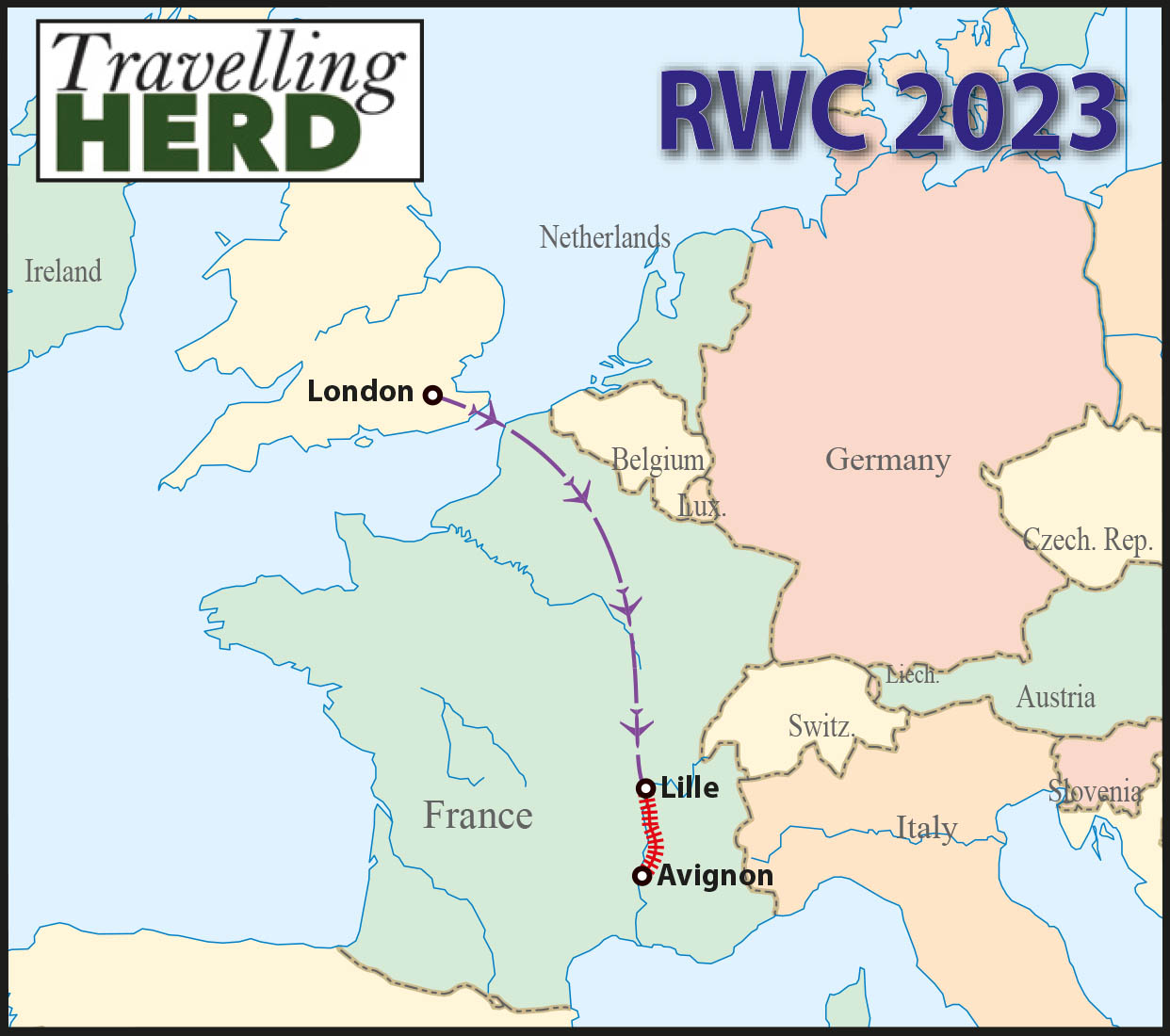Read this blog: The one where we kick off our RWC campaign
Wednesday 6th to Thursday 7th September 2023
When Robert bought tickets to the Rugby World Cup [RWC] in March 2021 transport and accommodation for the various venues were instantly in high demand. Our first destination was the England vs Argentina match in Marseille, scheduled for the day after the opening ceremony. Robert therefore planned that it would be easier to fly to Lyon and spend a few days travelling down to Marseille. We flew from Heathrow and spent a day travelling. By the time we checked in to our hotel in Lyon we were feeling the beginnings of heat exhaustion and lacked the energy to return to the centre so settled for a chilled beer and a Caesar salad in our hotel. We will be returning to Lyon in Al the motor home later in our [RWC] campaign and so will be able to see some of the sights of Lyon at our leisure then.
The next morning we were booked to travel by train to Avignon. Unfortunately we had just boarded a Metro line B train when it was announced that there were technical difficulties and trains would be suspended for about thirty minutes. Robert was able to find an alternative route on Google maps and so we walked a short distance to a tram line to take us the rest of the way. We then took a high speed TGV to Avignon TGV Station and then a local line into the centre. There is building work underway on the steps up to the central station in Avignon which will look splendid when it is finished.
As we walked to our accommodation, Matilda spotted the two star hotel we had stayed in the last time we visited in 2017. Robert’s selection criteria at the time had been that it had to be a) close to the station and b) cheap. You can imagine. This was the hotel which prompted Matilda to invoke her power of veto and demand fewer holidays if necessary but better accommodation.
Robert had booked a different hotel for this stay [thankfully] and after we had deposited our luggage we set out to see whether we would be able to visit some of the sights without pre-booking. Although we visited Avignon six years ago this was prior to the inception of Travelling Herd and we felt that we should revisit a few of the historic sites so that we could include them here.
The Palais des Papes [Popes’ Palais] in the Place de Palais is one of the largest and most important medieval Gothic buildings in Europe and was originally designed to be both fortress and palace.
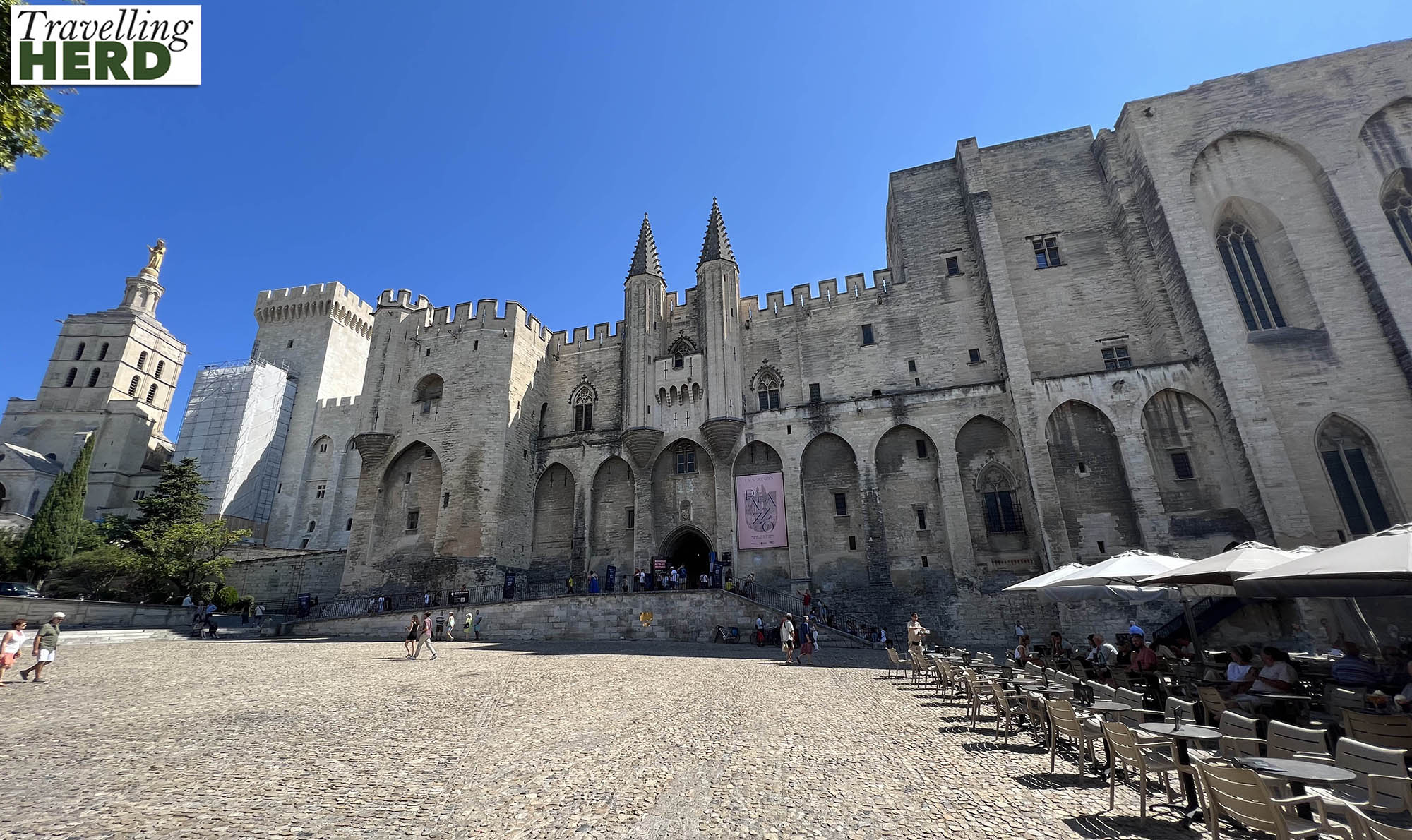
Fortunately we were able to buy tickets and go straight in.
In 1309, Pope Clement V moved the papal residence from Rome to Avignon, under the protection of the French king and the city continued to be the centre of Catholicism until 1377.
Unfortunately when we visited this time, as you enter the courtyard, there were banks of temporary seating on scaffolding obscuring the view which you had to walk under to continue the tour.
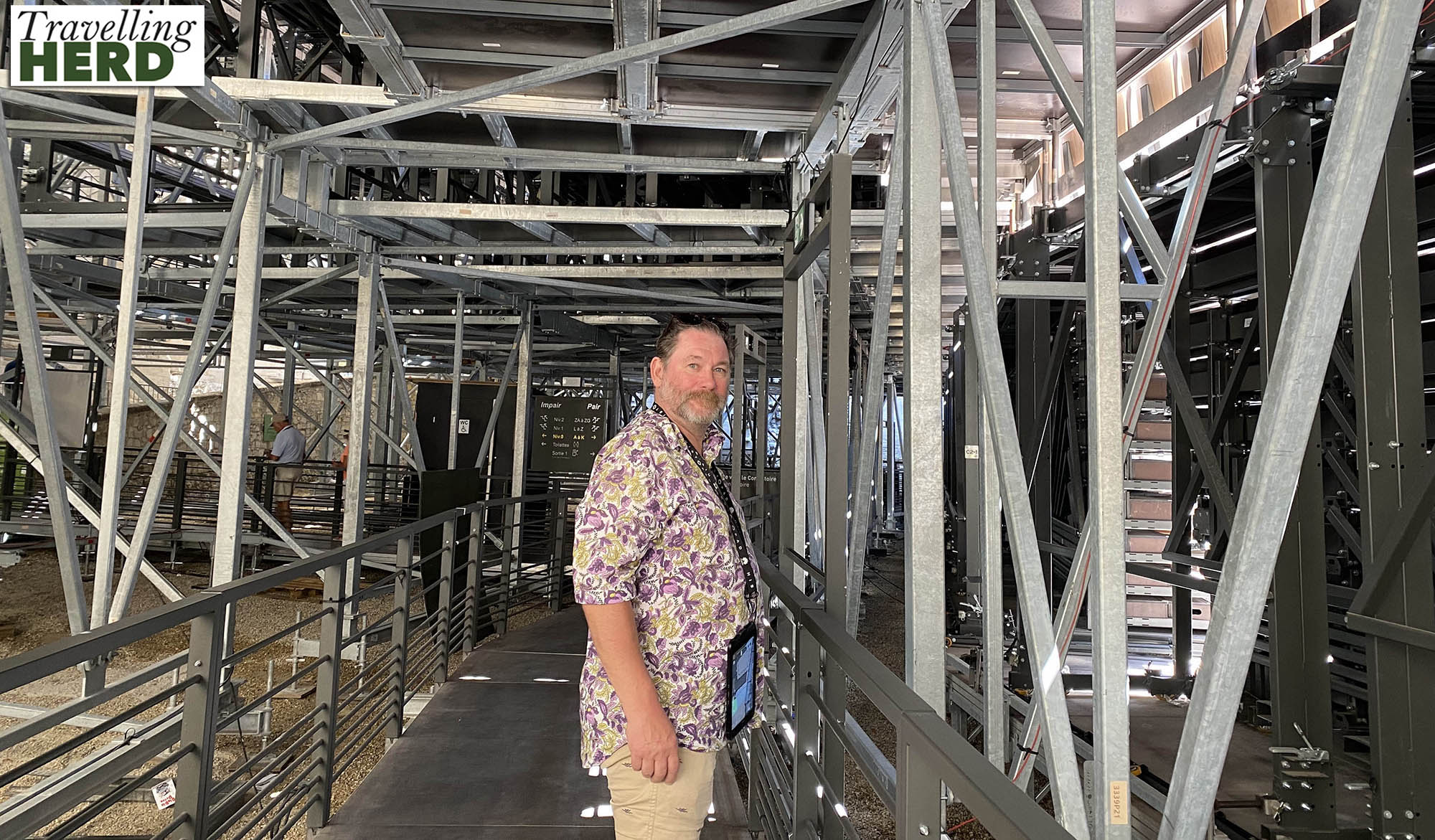
The building is indeed a magnificent mixture of fortification and religious architecture with cloisters and castellations.
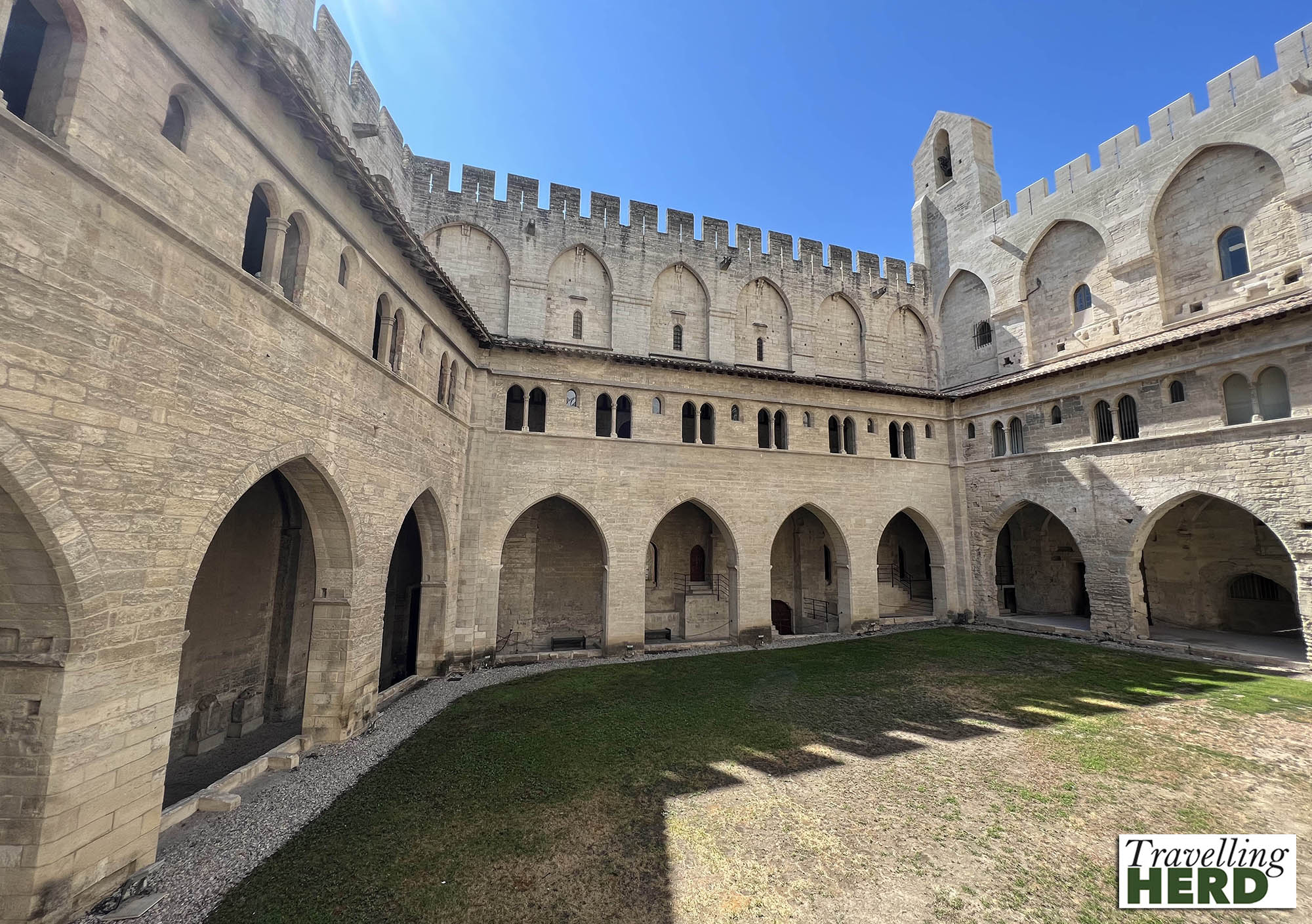
Included in the price of entry is a device called the “Histopad” – a tablet with a virtual reality point and view app which recreates the palace decoration as it would have been when it was built. Although the recreations were sumptuous and made the rooms come to life we felt the significance of this historic site was sacrificed to the technology and not explained in sufficient detail. We felt we learnt more last time we visited by reading the displays, even though fewer rooms were open to the public.
The palace is nevertheless of truly majestic proportions, intended as it was to reflect the importance of God’s representative on Earth. The Grand Tinel is grand indeed at 50m long: it was used as a banqueting hall for major religious celebrations.

The Great Chapel is also vast and imposing at 52m long, 15 m wide and 20 m high. Matilda struggles with the fact that these extravagant displays of wealth seem to be in such stark contrast to the founding principles of Christianity.
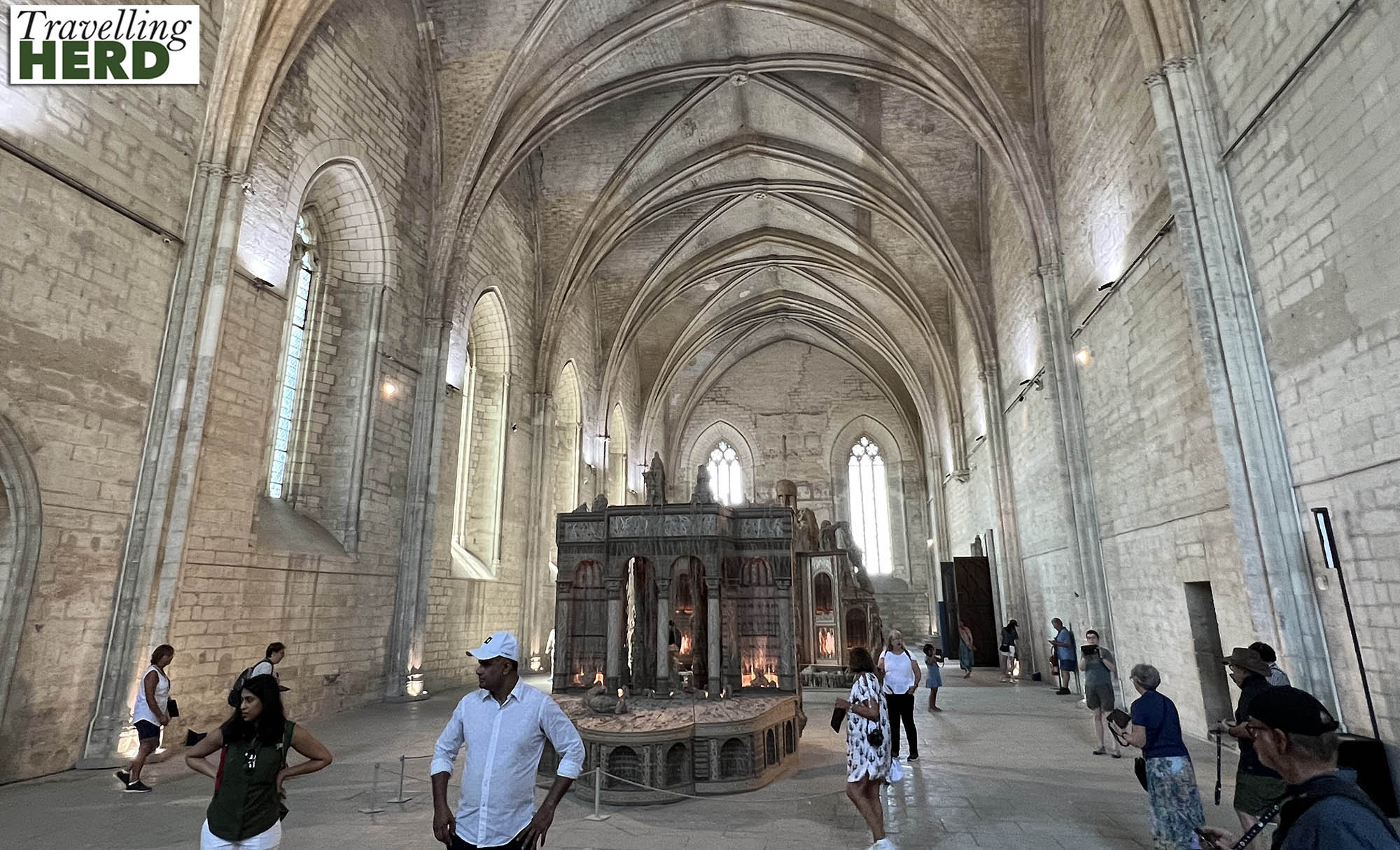
Avignon is perhaps best known for the bridge which inspired a song: Sur le Pont D’Avignon. The song is based on the Pont Saint-Bénézet which is sometimes simply called the Pont d’Avignon. We bought a combined ticket for entry into the palace and the bridge and so strolled down to the riverbank.
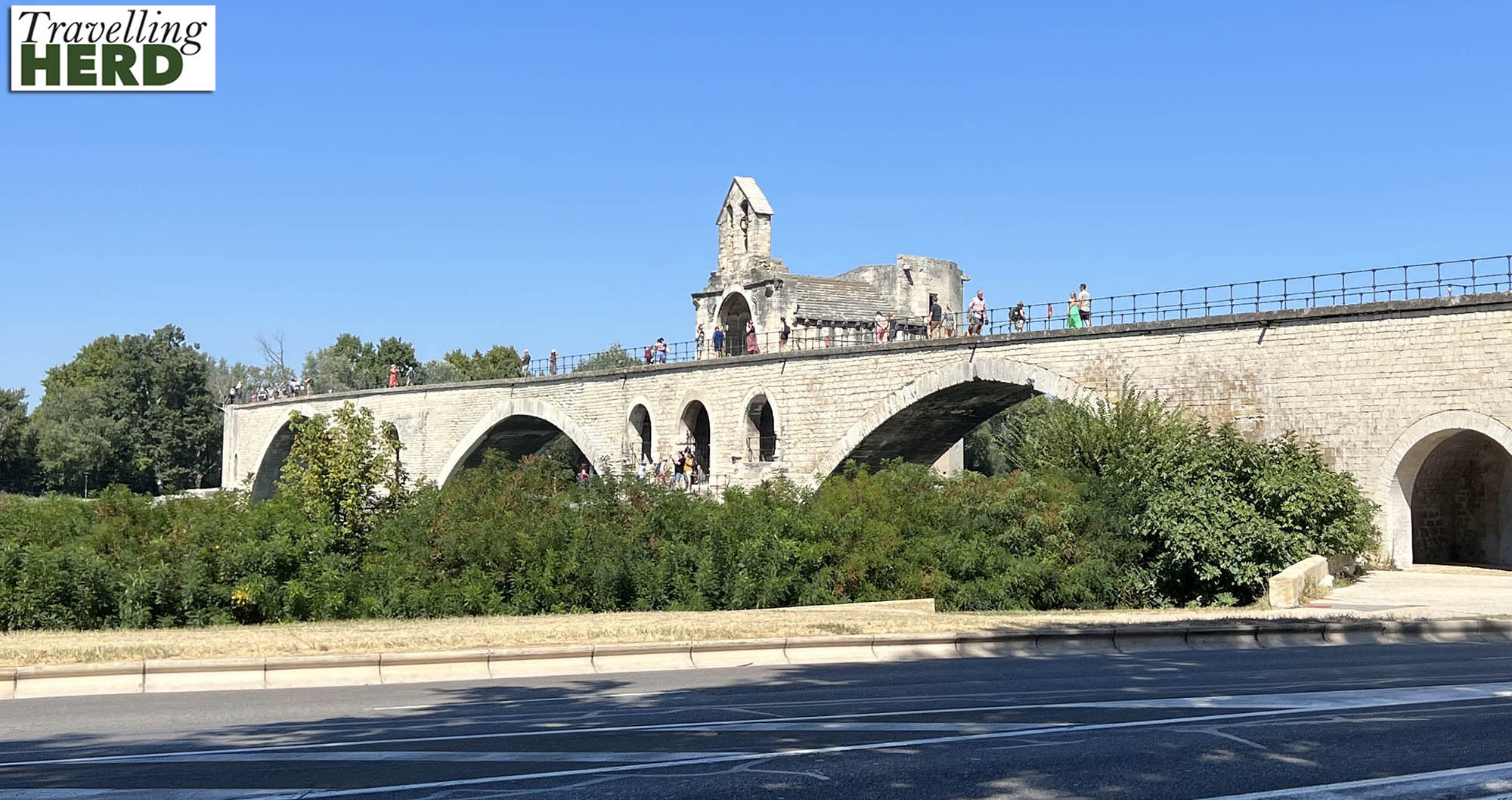
Originally the bridge spanned 900m over the River Rhône. After the wooden version was destroyed, a stone version with 22 arches was rebuilt in its place but four arches and the Chapel of Saint Nicolas are all that remain.
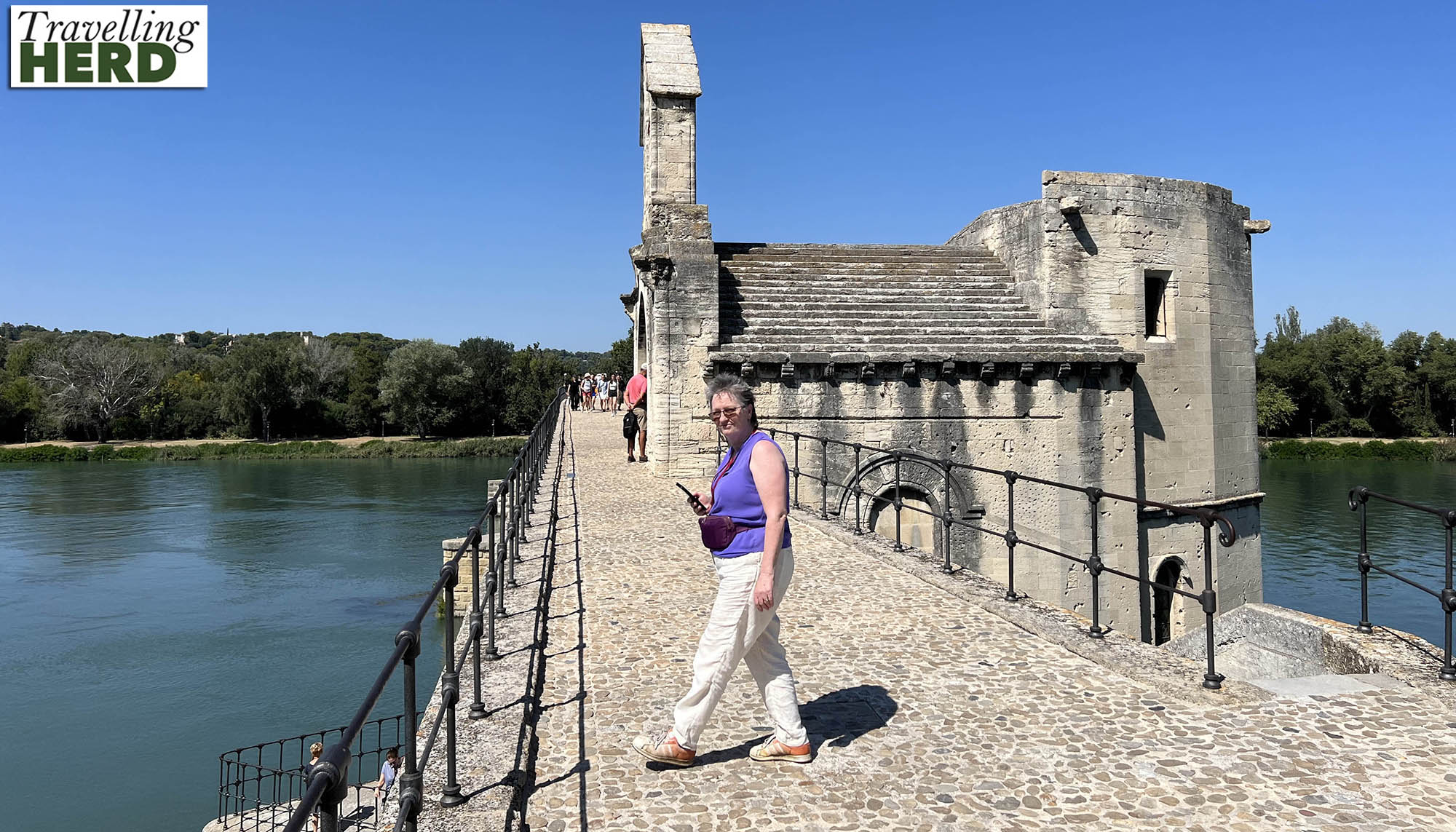
Walking back through the city, we passed the Hotel de Ville which has recently been cleaned and renovated.

Breakfast was not included at our hotel so we went to find a welcome cup of coffee and some morning refreshments. Our search for breakfast led us first to the covered market in Les Halles, thinking it might fulfil our needs.
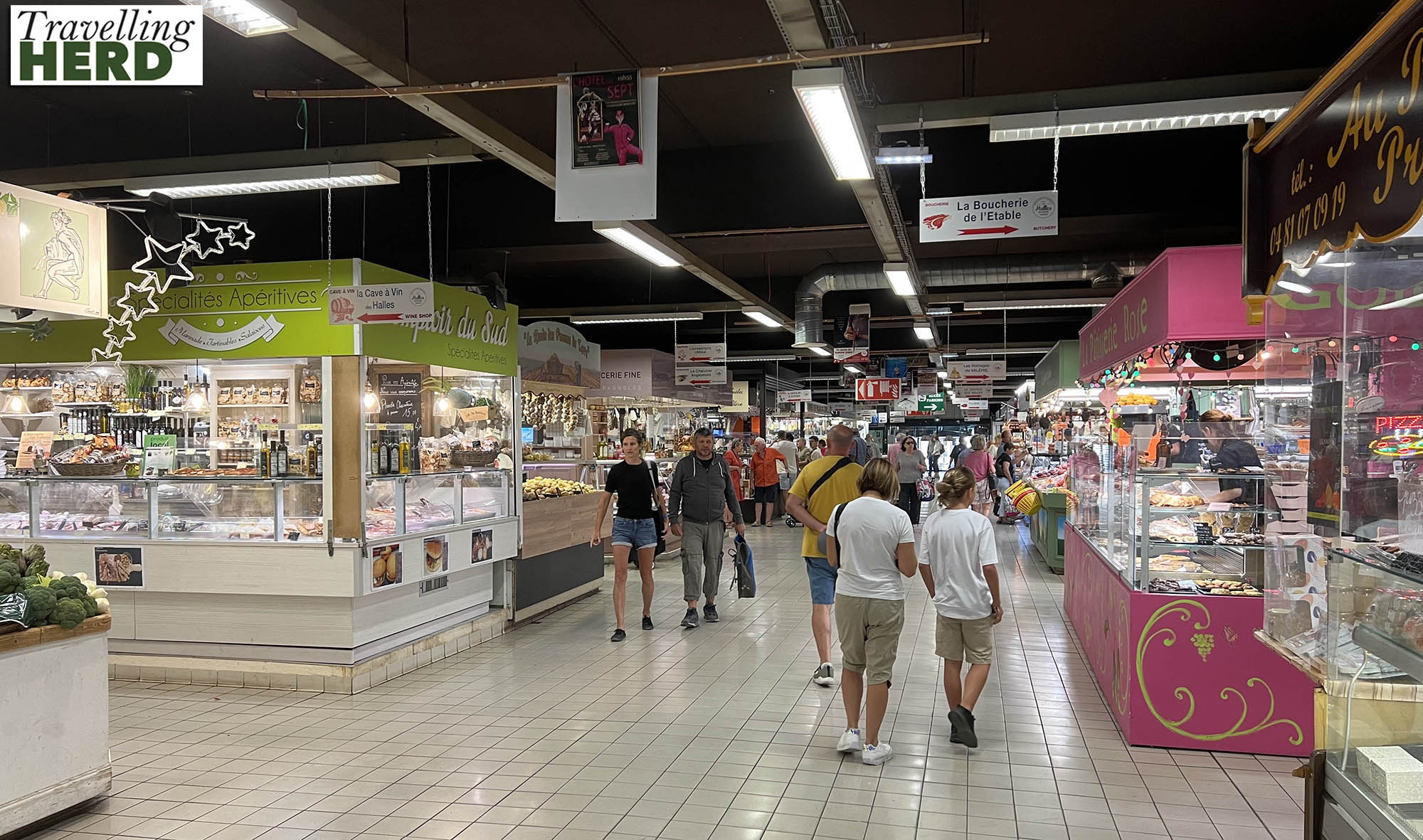
Although the food looked delicious it was not exactly what we were looking for and Matilda was very pleased when we walked out the other side of Les Halles and found Café Saint-Jean, one of the cafés she had read about. It was not a full English, and not as good as some breakfasts we have had but as Robert does not enjoy continental breakfast with pastries, this was an improvement in his eyes.
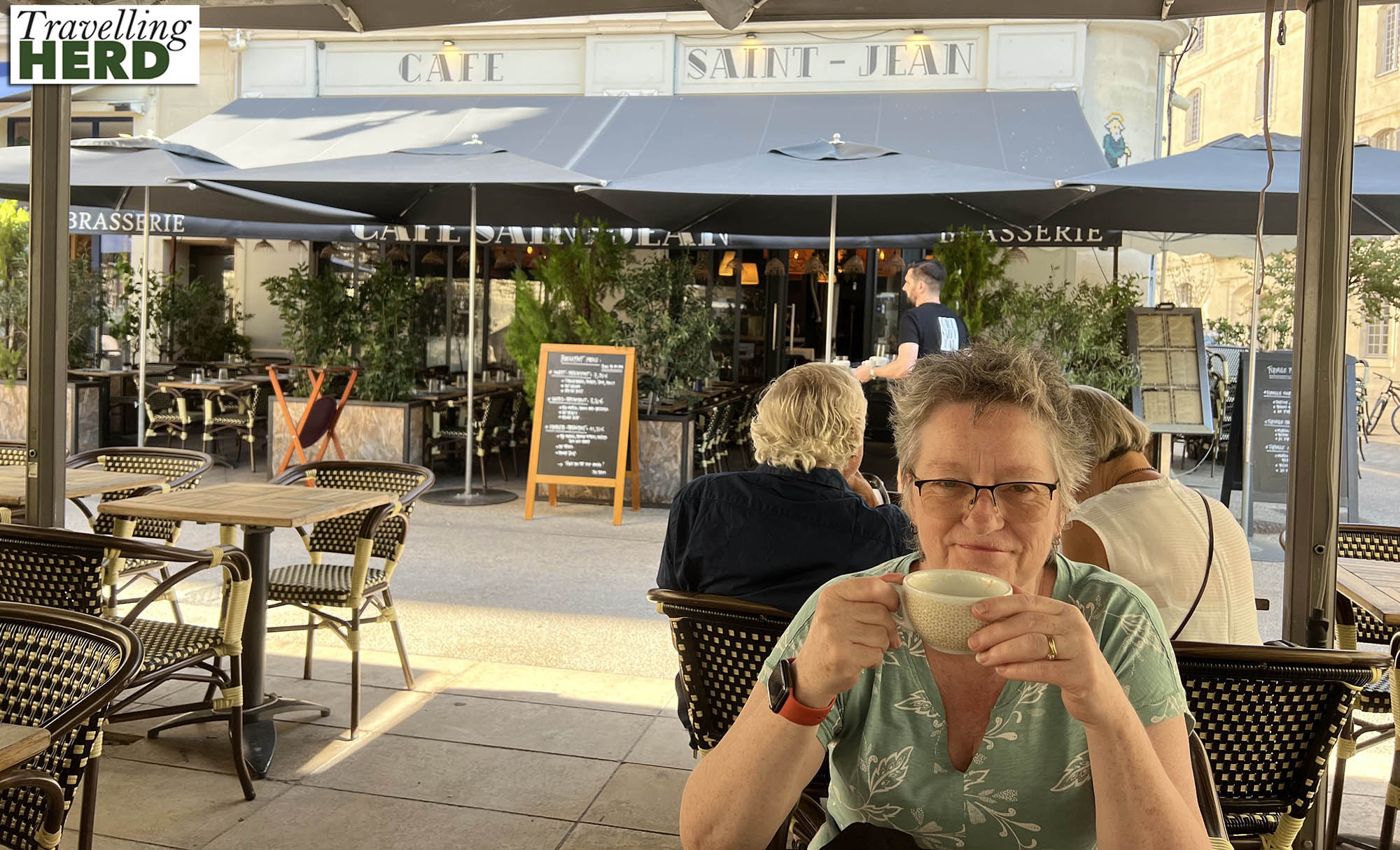
Matilda had also read about the Rue des Teinturiers, which translates as the ‘street of the dyers’. It is also sometimes referred to as the Street of the Wheels. The Vaucluse is a canal which runs along side the street and channelled water from the River Sorgue through the city walls to supply the textile industry which flourished here for five hundred years.
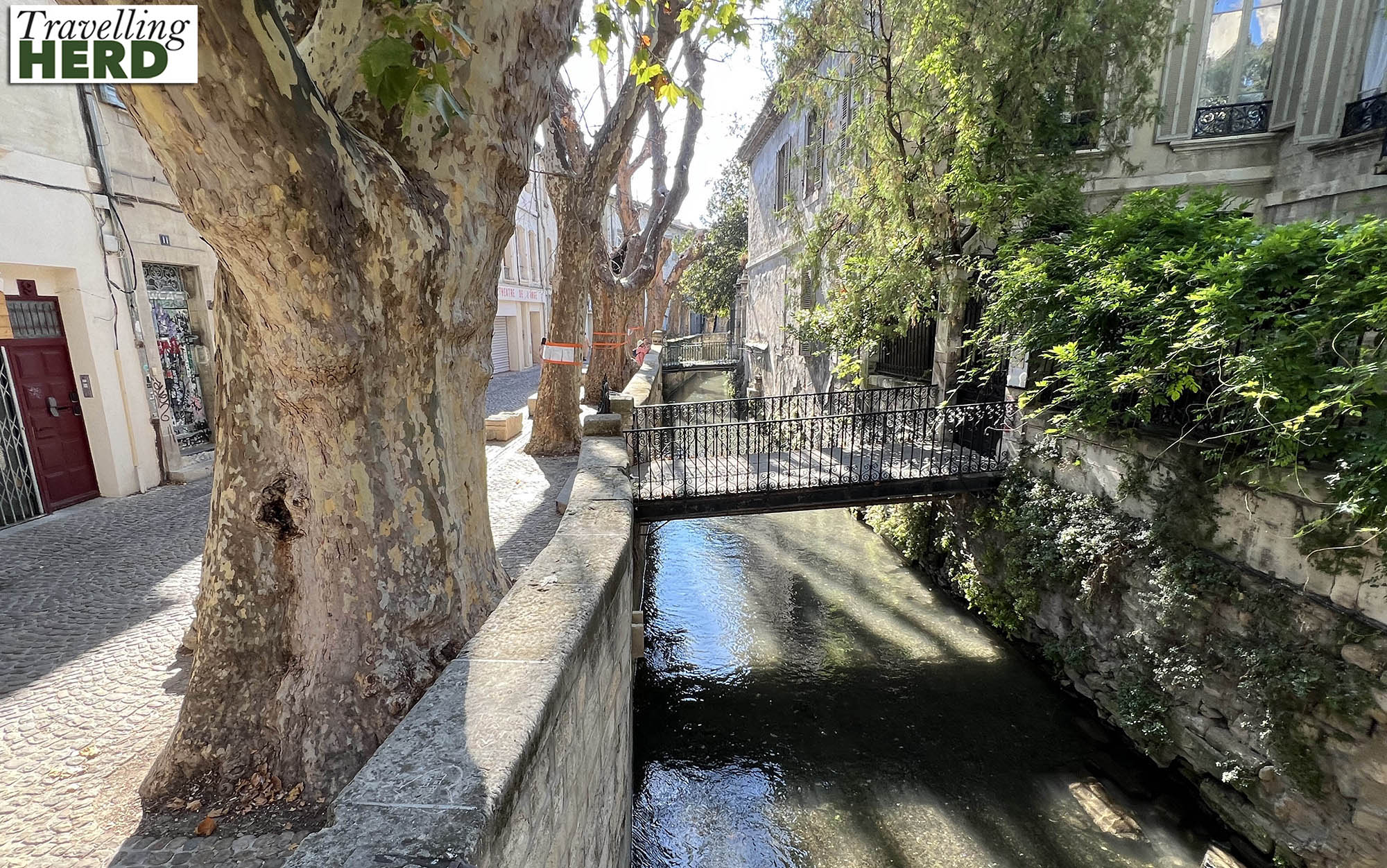
Originally there were 23 waterwheels providing power to wash, rinse and dye silk and other fabric. Only four wheels remain and although some of them still turn [see Video of the day] they no longer generate power.
The street is very picturesque with charming historic buildings. Jean-Henri Fabre, a naturalist whose work on insects inspired Charles Darwin, lived at number 14. The Miracle of the Parting is celebrated here on November 30th to commemorate the time in the fifteenth century when the flood waters divided, like the Red Sea before Moses, and kept the Eucharist dry in s small Franciscan church.
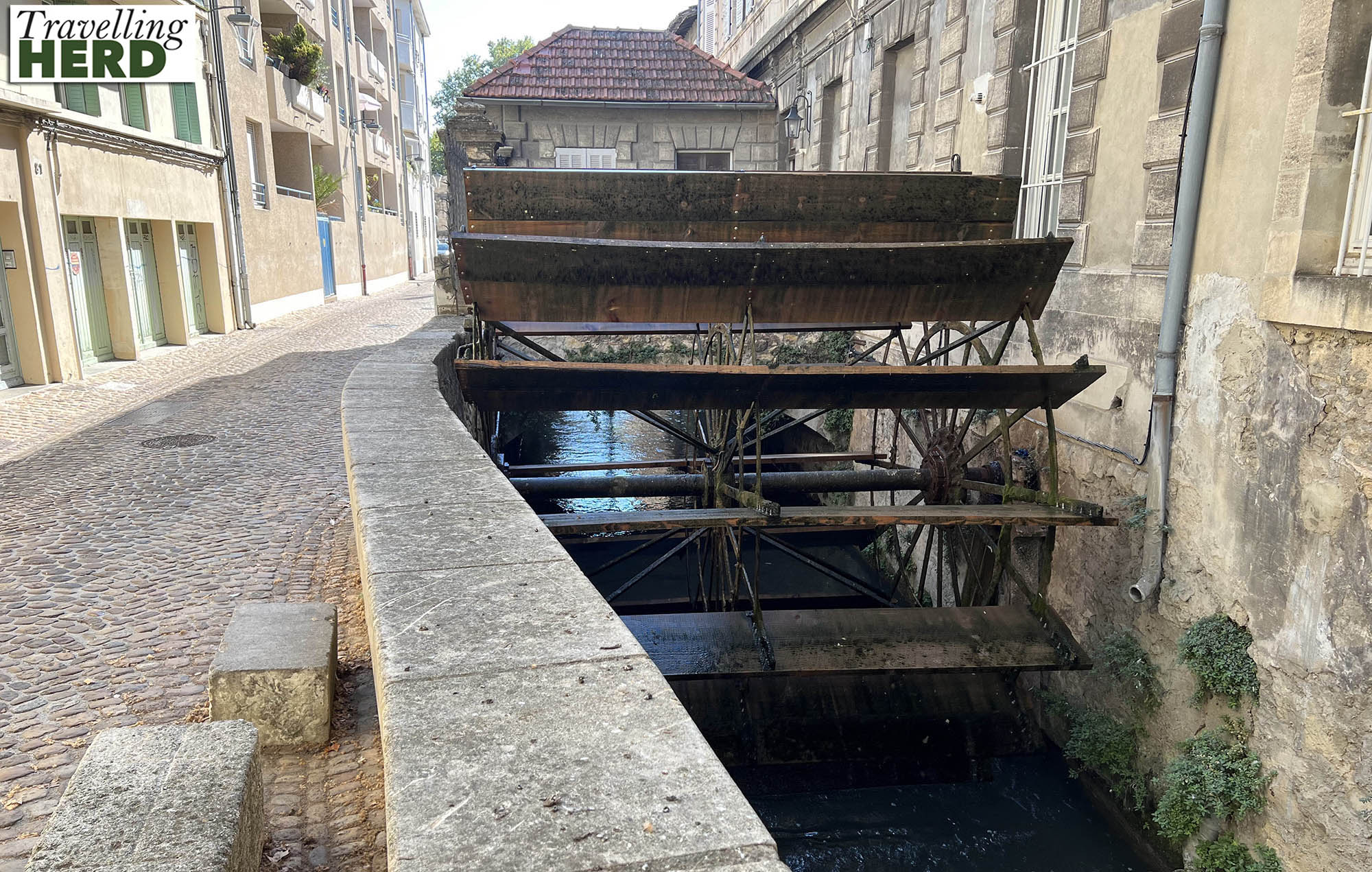
Returning through Avignon old town we came across some bears sunbathing. Avignon is one of the few French cities with its city walls intact: pale stone crenellated walls rise steeply and surround this beautiful city. Now that we have found a better hotel, we would happily return.
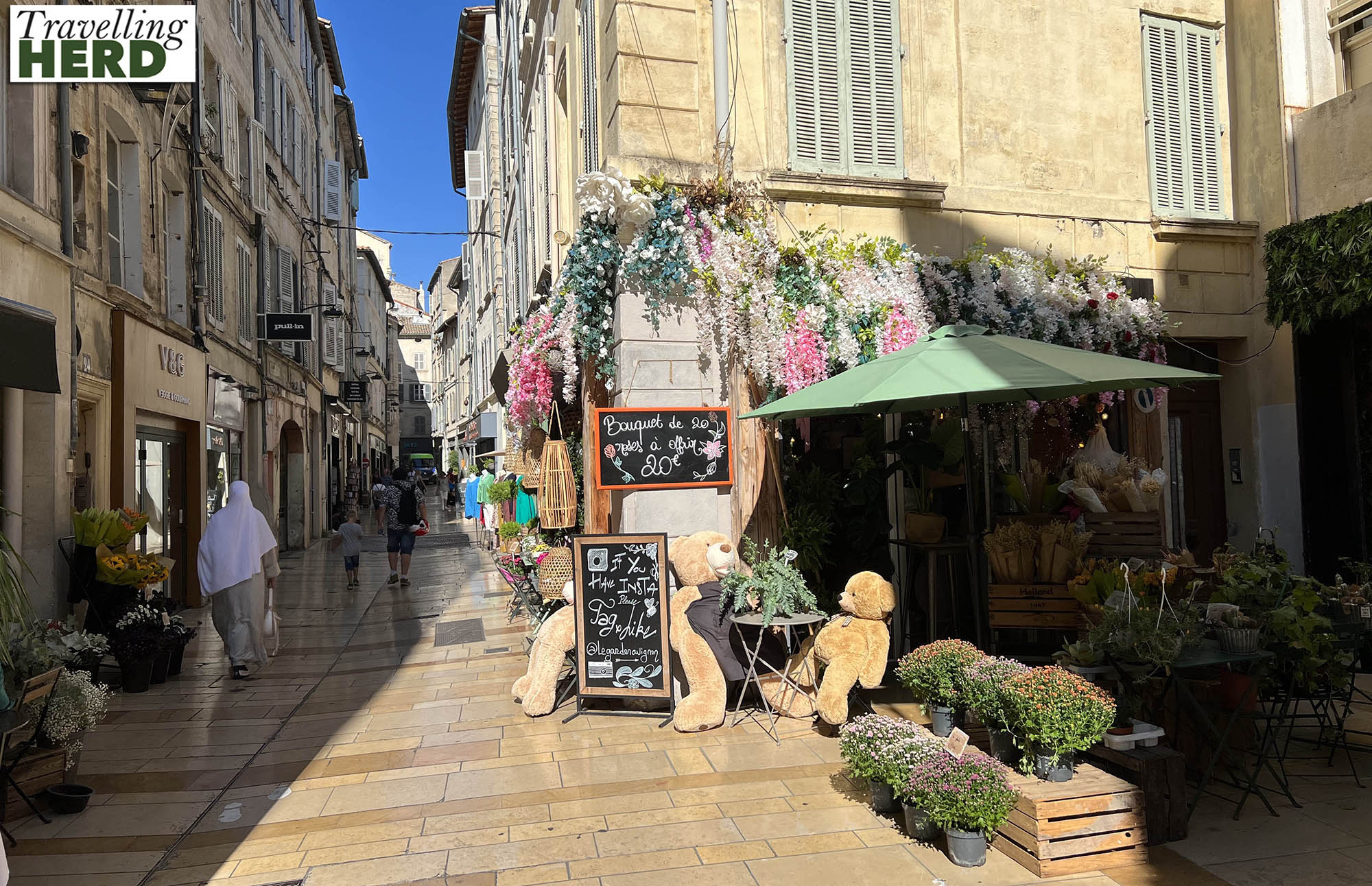
Video of the day: Rue des Teinturiers
Selfie of the day:
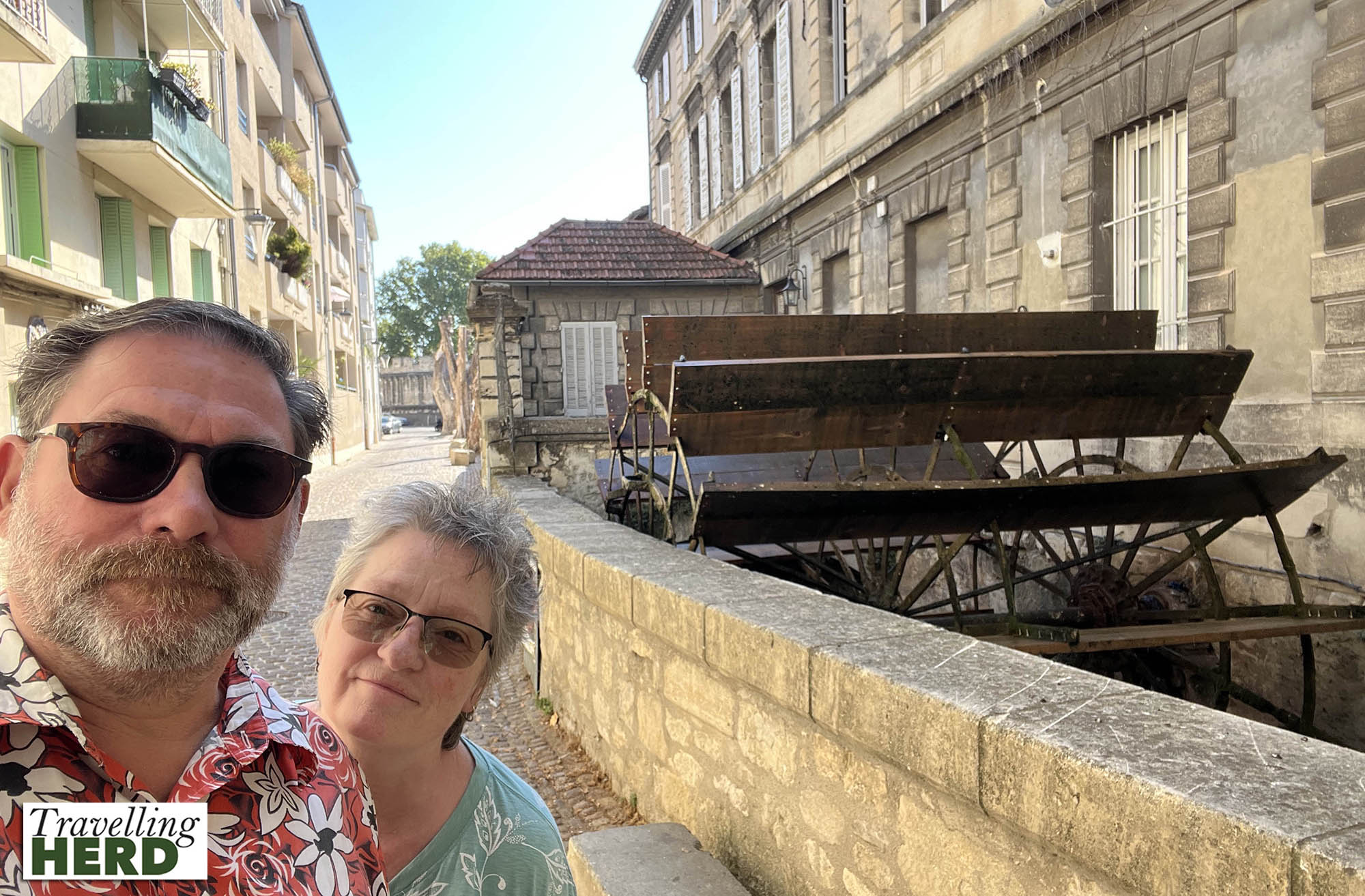
Dish of the day:

Route Map:
